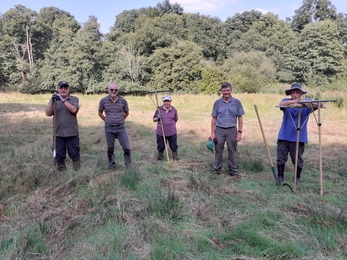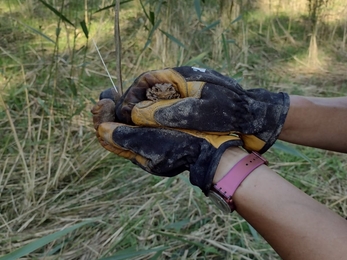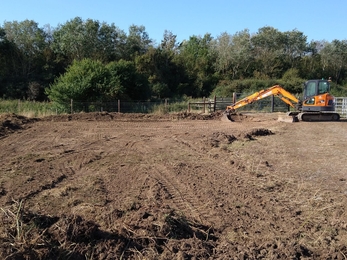Weekly wild news from our reserves – 1 October 2021
Raking has finished at Newbourne Springs - Charlie McMurray
Our brilliant team of volunteers cut and raked our species rich hay meadow at Newbourne Springs by hand this week. Well done everyone!
Creating cattle corral base at Trimley Marshes
We need to periodically gather and check or treat our conservation grazing cattle, so we’ve been building a new corral for them at Trimley. Our conservation grazers selectively eat vegetation, and help create ‘poached’ areas (muddy, uneven ground through the action of hoof trampling) that helps open up patches of bare land seasonally.
Moths at Church Farm
North East Suffolk Assistant Warden, Dan Doughty, has been spotting some lovely moths at Church Farm in September like this white point, lunar underwing, rosy rustic and setaceous Hebrew character. The white-point is a recent immigrant to the UK and its distribution and occurrence seems to be increasing – a possible indicator of climate change perhaps.
Bufo Bufo
Joe Bell-Tye spotted this beautiful common toad at Arger Fen this week. Common toads (bufo bufo) are amphibians, breeding in ponds during the spring and spending much of the rest of the year feeding in woodland, gardens, hedgerows and tussocky grassland. They hibernate over winter, often under log piles, stones or even in old flowerpots.
Toads are famous for their mass migrations back to their breeding ponds on the first warm, damp evenings of the year, often around St. Valentine's Day. You may know of a place near you in Suffolk where this happens? Common toads tend to breed in larger, deeper ponds than common frogs. Toad tadpoles contain toxins that make them unpleasant for predators to eat, allowing them to survive in deep ponds containing fish, which would eat the tadpoles of frogs. Adult toads also contain these toxins, stored in their skin glands. Great for the garden, common toads mainly feed on slugs, snails and other invertebrates.
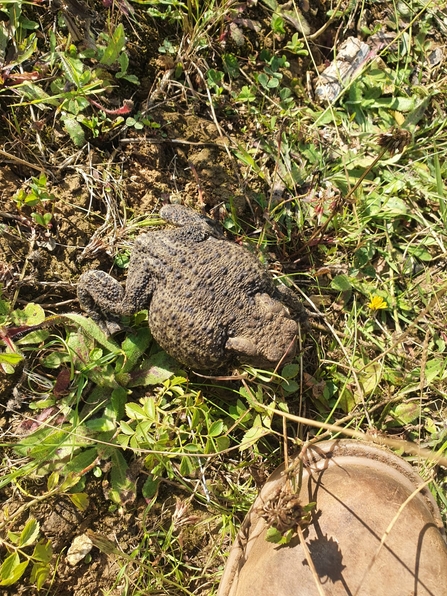
Toad - Joe Bell-Tye
Searching the Web
Early autumn means cooler temperatures at either end of the day. This cooling brings with it the condensing of water vapour into water droplets and with it the revelation of bejeweled spider webs sparkling in the morning light. Expect more of these photos over the coming weeks, but for this week we focus on the wasp spider.
The wasp spider is a very large, colourful spider that is a recent arrival in the UK from the continent and has slowly spread over the south of England. It builds large orb webs in grassland and heathland and attaches its silk egg-sacs to the grasses. The web has a wide, white zig-zag strip running down the middle, known as a 'stabilimentum', the function of which is unclear.
Mating is a dangerous game for males; they wait at the edge of the web until the female has moulted into a mature form, then take advantage of her jaws being soft and rush in to mate. However, many males still get eaten during this time. The female wasp spider has yellow, black and white stripes, just like a common wasp. Its legs are also stripy. The male is smaller and pale brown.
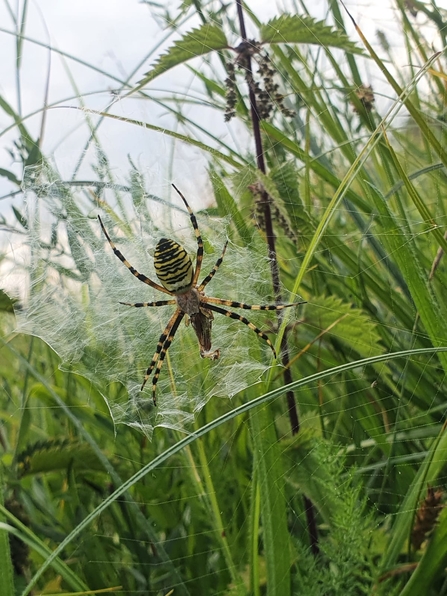
Wasp spider at Lackford Lakes, Joe Bell-Tye
Pure nectar
Late seasonal sources of nectar are of great importance to our invertebrate populations. Water mint, found growing in most Trust wetland nature reserves, is one of these candyfloss-coloured wild sweet shops. There are about 14 or 15 species or hybrids of mint growing in the UK, most of which have very aromatic leaves. Water mint prefers damp habitats and grows in water, making it a good choice for wildlife ponds and bog gardens. Its leaves can be used in the same way as other mints, flavouring cooking and drinks. You will see it flowering through October on your walks and visits throughout the county.
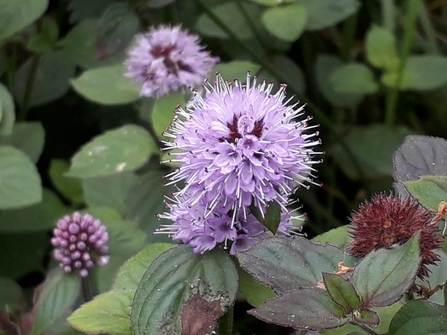
Water mint in flower at Redgrave and Lopham Fen - Debs Crawford


